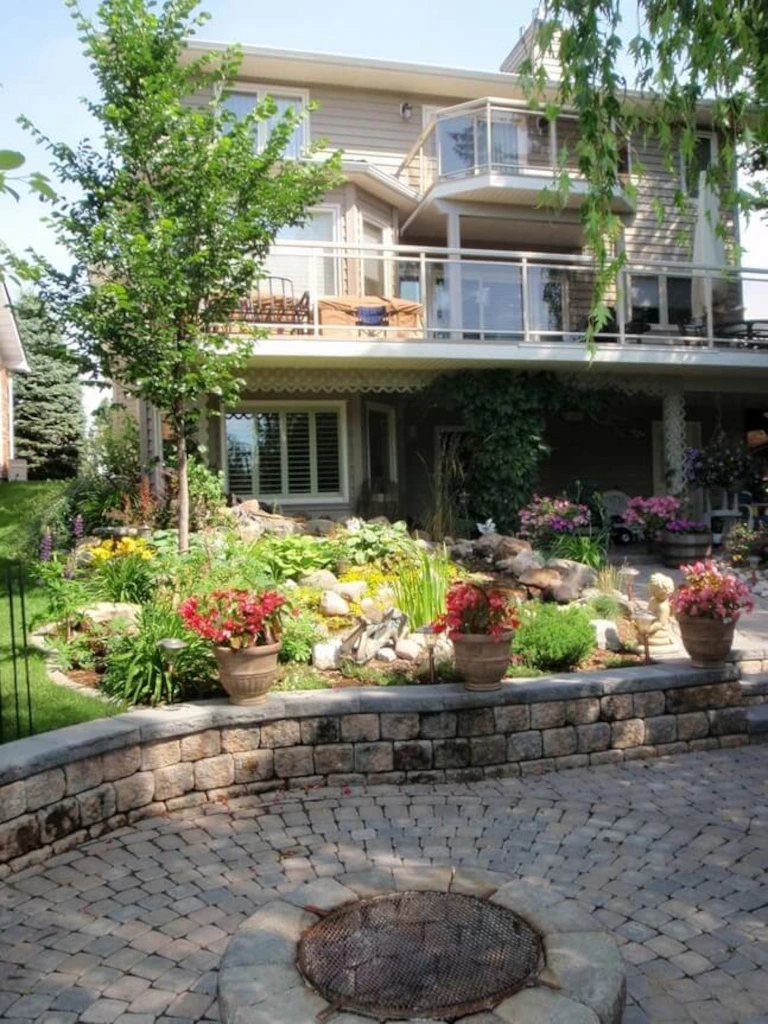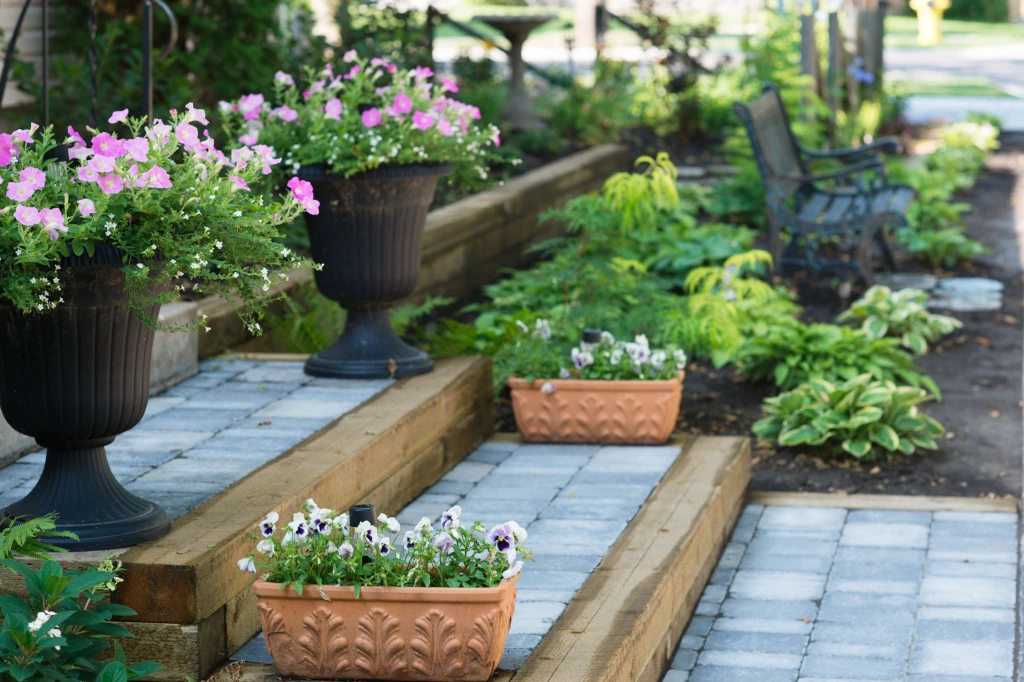



Check the plants and soil conditions every 2-3 days for moisture. (more if it is hot and windy) Frequency and amount of water depends on your site conditions (soil and drainage) and the weather. Water only when the soil feels dry to the touch (2 inches) into the root zone. Remember a plant can be over watered as well.
Shrubs and potted trees tend to dry out more quickly, therefore more frequent monitoring and watering may be necessary to avoid wilting. It takes several weeks for roots to extend beyond the original soil ball, so be sure to check this area as it often dries out faster than surrounding garden soil. Deep watering encourages a deep root system and your plant will become more drought tolerant. Continue this form of watering until the plant is well established and growing.
Drainage is essential: Divert downspouts, sump discharge and excessive water away from planting area.
Water deeply once more in late October before freeze up to ensure water is there to protect the roots.
Check the soil moisture around the base of the tree once a week. Keep the soil free of weeds, cultivating lightly once or twice per month.
If the soil is dry to the touch in the top 2-4 inches of the root zone, give the tree a thorough soaking. This means letting the hose run continuously for about 10 minutes or applying at least 20 to 30 gallons slowly, allowing the water to penetrate into the root ball.
Once the tree is in leaf and the weather is continuously warm, the tree can generally use a once a week watering as described above (e.g. months of June, July and August) providing there is adequate drainage. Do not water if the soil is saturated or there is poor drainage. Continue to check on a weekly basis.
If the weather remains cool and wet for an extended period (that is more than a week) a weekly watering may be skipped. However, always continue to check on a weekly basis during the growing season. Rainfall is not always sufficient or dependable for the first season for proper root development.
You should not have to water more than once a week, but when you do water make sure it is a thorough and full penetration of the root ball (12 to 18 inches deep)
During September the watering can be reduced to an average of twice a month but continue to monitor the soil conditions weekly.
After mid-September: stop watering to allow the tree to shutdown. Water deeply once more in late October before freeze up to ensure water is available to the tree during mild winters and in the spring.
Let’s Bring Your Vision to Life
Transform your outdoor space with The Landscaping Company! Whether you’re dreaming of a new yard, a stunning patio, or a custom water feature, we’re here to make it happen. With decades of experience and a commitment to quality, we specialize in turning average yards into homeowner’s paradises. Get a Free Quote Today! and let’s bring your vision to life.





Remember to water sod in the morning as it is better for evaporation and preventing disease. Sometimes you will need to water twice during hot days. After week three sod needs an inch of water a week, from rain or the sprinkler. We recommend a rain gauge to get best results. An inch with your sprinkler would be about an hour. Use a rain gauge to see how long it takes to make an inch with your sprinkler. Also check with your finger: if the ground is wet down to 4 inches you have enough water. The ‘M’ on the schedule is mowing. Try not to go longer than two weeks, but make sure the lawn is dry enough to walk on first. A healthy lawn should be mowed about once a week.
Long slow watering is better than light frequent watering, so if you do not have soil wet down to 4 inches continue watering as opposed to watering again later.
Don’t walk on the sod when it is wet, tie a rope to the sprinkler or use plywood as a bridge to move your sprinkler around the yard.
Day | 1 | 2 | 3 | 4 | 5 | 6 | 7 |
Week 1 | W | W | W | W | W | W | W |
Week 2 | W |
| W |
| W |
| M |
Week 3 |
| W |
|
|
|
| M |
Water with enough water to keep the surface wet, without causing the surface to erode or the seed to float – about 1⁄4 inch. Water lightly and frequently, never letting the topsoil dry out, until the seed germinates. With Kentucky bluegrass this can be 14 to 30 days. Once the grass is 1 inch it has a root system that can get water from the soil. Water can now be cut back to once or twice a week depending on weather. Hot weather needs more water than cool weather. Lack of water is the number 1 reason seed fails, as they can die within a few hours of drying out.
In the first year you will need to cut flowers off as they grow. Allowing the plants to go to seed will takes a lot of energy that is better focused on root growth. The roots need all the help they can get in the first winter. When spring arrives you can cut back your perennials to allow for more room for the new growth. Fertilize with a high nitrogen fertilizer. You can fertilize throughout the year but avoid fertilizing after August.
After the first growing season you can start cutting back your perennials in the fall or spring. You can also fertilize throughout the year starting around May and never after August. Perennials need to go dormant for the winter and late fertilizing can confuse the plant.
Maintaining shrubs and trees is a much easier task. In the first year you want to concentrate on watering as outlined above and on pruning any dead branches. You can also fertilize starting in May but ending before August so the plants have a chance to go dormant
After the first growing season, you can prune your tree or shrub for shape or hedging. Plants that flower early should be pruned in right after the flowers die. Shrubs that flower later in the season or that have no flowers (summer and Fall) should be pruned early spring, late fall or winter.
Keeping the leaves and other falling debris cleaned up under the shrub/ tree will help keep fungus and other pests away.
If you have any questions about anything please feel free to call.